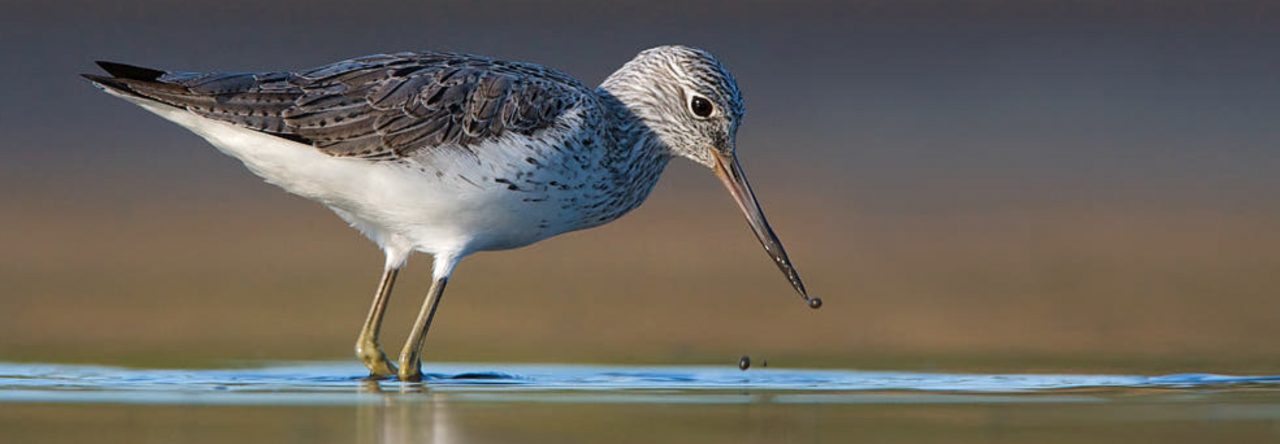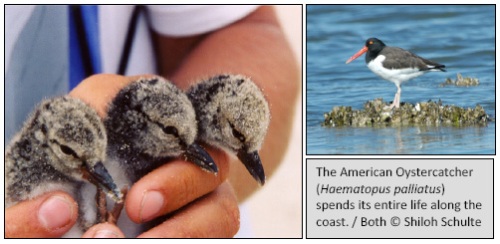Posted by Robert??Johns/ABC, USA
* ABC has several recognized experts on the potential impacts of the oil spill who are available for interviews. Included among those experts is Dr. Michael Fry who is Chairman of the Federal Minerals Management Service (MMS) Environmental Studies Advisory Committee. MMS regulates and manages the development of energy and mineral resources in the Federal waters off the nation’s shores. To arrange for an interview, call Bob Johns at 202-234-7181.
Washington, D.C. ??? April 30, 2010) American Bird Conservancy (ABC), the nation’s leading bird conservation organization, today released a list of key bird sites they say are most immediately threatened by the ongoing Deepwater Horizon oil spill in the Gulf. The sites have been previously designated as Globally Important Bird Areas by the organization, and are directly in the path of the advancing oil slick.
“This spill spells disaster for birds in this region and beyond,” said ABC President George Fenwick. “It is ironic that next weekend is International Migratory Bird Day. At a time when we should be celebrating the beauty and wonder of migratory birds, we could be mourning the worst environmental disaster in recent U.S. history.”
The Gulf Coast is extremely important for hundreds of species of migrants, which variously breed, winter, and rest here during migration. The population effects on birds from this spill will be felt as far north as Canada and Alaska, and as far south as South America.
The complexity of the Gulf coastline, with numerous bays, estuaries, inlets, marshes and creeks, will make cleanup extremely difficult; impacts could last for decades for much of the habitat, and some species may suffer significant long-term population declines.
“This spill tells us that we cannot take our coastline for granted. A re-assessment of our approach to offshore drilling is required in the light of this disaster that includes the development of no-go areas for oil,” Fenwick said.
ABC has produced a map of the 500 Globally Important Bird Areas in the United States, 149 of which are coastal or have a coastal component that could be affected by this and future marine oil spills. A portion of these sites are in immediate danger from the Deepwater Horizon spill.
A complete list of all ABC-designated Globally Important Bird Areas is available at http://www.abcbirds.org/abcprograms/domestic/sitebased/iba/ibalist.html
“There are costs to wildlife and their habitats for every form of energy generation, whether it is coal, oil, wind, nuclear, or any other form. Those costs must be re-assessed, not by economists, industry, or energy experts, but by biologists, ecologists, and environmental experts. The stakes are simply too great to leave to chance. We must stop playing Russian roulette with the future of our environment,” said Fenwick.
All coastal nesting species (herons, terns, skimmers, plovers, gulls, rails, ducks) are currently present on the Gulf Coast, including several species on the U.S. WatchList of birds of conservation concern. The impact to these species depends on how long the leak lasts and what happens with weather and currents. The leak could persist for weeks or months, and end up being the worst environmental disaster in U.S. history.
For species with long lifespans and low reproductive rates (e.g., Reddish Egrets, Least Terns), acute mortality events such as this can have long-term population-level impacts if they affect a large proportion of the breeding population. This is because the adults that survive do not produce young quickly enough for populations to recovery quickly. Species where large proportions of their populations concentrate in a few, discreet locations (e.g., species with only a few breeding colonies and species that concentrate en masse during migration stopover) are particularly vulnerable to these events.
Compounding problems for songbirds, not normally directly affected by oil spills, is the smoke billowing skywards from the burning oil that was set alight to try to minimize damage to marine life.
“Millions of our songbirds are crossing the Gulf now, and will arrive Stateside perilously weak and undernourished from their journey. The smoke may well compound their precarious situation and potentially lead to birds failing to make it to shore, or arriving so weakened that they are unable to survive,” said Fenwick.
The top ten sites at most immediate risk from the Deepwater Horizon Oil Spill
Gulf Coast Least Tern Colony
One of the world’s largest colonies of the threatened Least Tern
Lower Pascagoula River ??? including the Pascagoula River Coastal Preserve
The coastal marshes at the mouth of the river support Yellow and Black Rails, Snowy Plovers, and endangered wintering Piping Plovers
Gulf Islands National Seashore
Hosts thousands of wintering shorebirds, including endangered Piping Plover, Wilson???s Plover, and American Oystercatcher, as well as Brown Pelican, Black-crowned Night-Heron, White Ibis, and Black Skimmer.
Breton National Wildlife Refuge ??? including the Chandeleur Islands Largest tern colony in North America, predominantly of Sandwich, Royal, and Caspian Terns. Also American Oystercatcher, Brown Pelican, Reddish Egret, and endangered Piping Plover. Also an important wintering area for Magnificent Frigatebird, and stopover site for Redhead and Lesser Scaup.
Dauphin Island An important stopover site for migrant birds including shorebirds, gulls, terns, herons, and rails.
Fort Morgan Historical Park An important stopover site for migrant birds including shorebirds, gulls, terns, herons, and rails.
Bon Secour National Wildlife Refuge An important stopover site for thousands of trans-Gulf migrants.
Eglin Air Force Base Best known for its inland population of Red-cockaded Woodpeckers, Elgin also has significant coastal habitat for shorebirds and wading birds
Delta National Wildlife Refuge Large numbers of wading birds nest here, including White Ibis, Snowy Egrets, and herons; thousands of shorebirds use the mudflats in winter and during migration, including Dunlin, Long-billed Dowitcher, and Western Sandpiper, as well as endangered Piping Plover.
Baptiste Collette Bird Islands This artificial barrier island, created from dredge spoil is one of the many Louisiana coastal islands that could be affected. Birds found here include Caspian Tern, Brown Pelican, Gull-billed Tern, and Black Skimmer.
Map of Oil Spill in Relation to Globally Important Bird Areas (?? American Bird Conservancy)
American Bird Conservancy conserves native birds and their habitats throughout the Americas by safeguarding the rarest species, conserving and restoring habitats, and reducing threats while building capacity of the bird conservation movement. ABC is a 501(c)(3) not-for-profit membership organization that is consistently awarded a top, four-star rating by the independent group, Charity Navigator.










